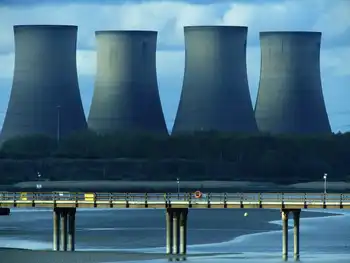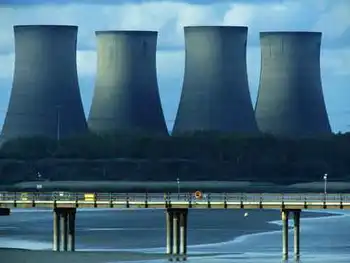Coal to remain king in Germany
By Reuters
NFPA 70b Training - Electrical Maintenance
Our customized live online or in‑person group training can be delivered to your staff at your location.

- Live Online
- 12 hours Instructor-led
- Group Training Available
Six months after planners faced rising project costs and growing public opposition, latest plans show Germany, Europe's biggest power market must continue to focus on coal if it phases out nuclear power as planned and curbs reliance on Russian gas.
"The planners are finding coal the more attractive option as opposed to gas, price-wise and in terms of availability," said Manuel Frondel of the RWE research institute in Essen.
The coal which fires half of Germany's power output comes largely from countries which are considered reliable sources like Australia and South Africa.
One reason the coal lobby can appease environmental concerns about the climate-harming carbon dioxide from coal plants is a new remedy: carbon capture and storage (CCS).
Just recently, Britain announced plans to force all new coal plants in the country to test the pioneering carbon-cutting technology, opening the door to give coal a new lease of life as an energy source in a world more conscious of climate change.
In January, the reliability of gas as an energy source was thrown into doubt when a row between Russia and Ukraine cut supplies to Europe when it was most needed.
Industry group BDEW showed a table with 14 German coal plant projects totaling 14,000 megawatts (MW) of capacity which are due to open by 2012.
This is nearly half the total new power generation needed up to 2020 and comes after 10 big projects were held up in 2007 and 2008 by soaring construction prices.
At least 9,000 MW more plants may be built after 2013.
Germany's cabinet this month approved a CCS draft law that paves the way for developing the technology aimed at cutting coal plant pollution and burying CO2 underground.
CCS, which is seen as the only way coal-fired power generation can continue to play a role in the energy mix, has not yet been proven on a commercial scale.
But Germany's law will not go so far as Britain's plan to force all new coal plants to test CCS technology.
Ministries led by opposing political parties overcame divisions over standards for pilot plants and CO2 repositories so as to pass the law before the summer.
This allows operators to declare new plant projects "capture ready" to allow for the new technology to be refitted.
"Although CCS will take 10 to 15 years to develop and it is by no means certain that it will be applicable, passing the law will be one of the arguments in favor of the construction of new coal-fired plants," said Claudia Kemfert of the DIW institute.
The leading utilities — RWE, E.ON and Vattenfall Europe which are all planning new coal capacity along with number four, EnBW — are now testing CCS.
RWE is seeking 1 billion euros ($1.30 billion) from a partner or from public funds to help finance a CCS pilot plant at Huerth, which could be up and running from 2014.
Meanwhile, costs to build coal plants may fall, said Bremen research institute Trend:Research after assessing demand trends, manpower capacity and raw materials, especially steel.
In the medium term, the current cost of 1,700 euros per kilowatt for a new hard coal-fired plant may ease to between 1,400 and 1,600 euros/KW, excluding CCS costs, it said.
Cost savings will delight utilities, which limit investments at times of falling demand and must factor in environmental costs, even if modern plants produce much less CO2.
While the incumbents' financial muscle enables them to remain flexible, they still have to grapple with CO2 costs and public hostility toward coal.
RWE, for example, will agree it needs to cut its CO2 bill. It is short of carbon emissions permits and needs to buy enough to cover some 140 million tons of carbon it emits from plants annually, which adds up to two billion euros at current prices.











